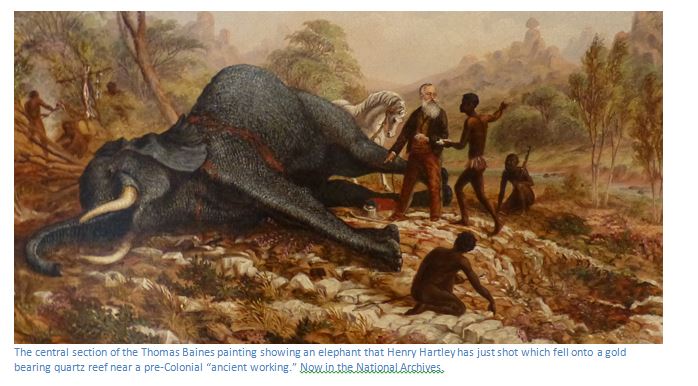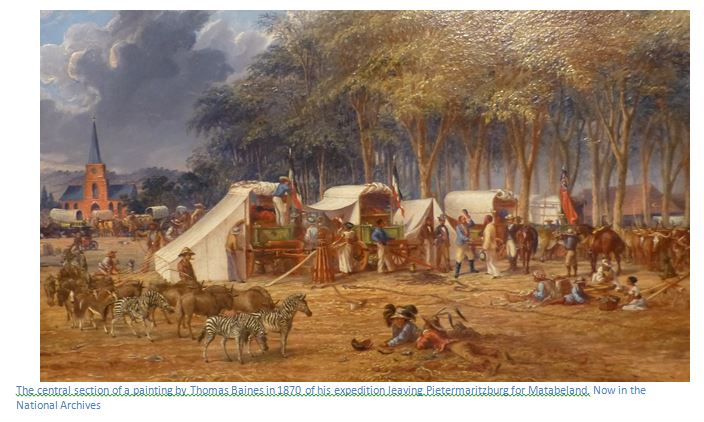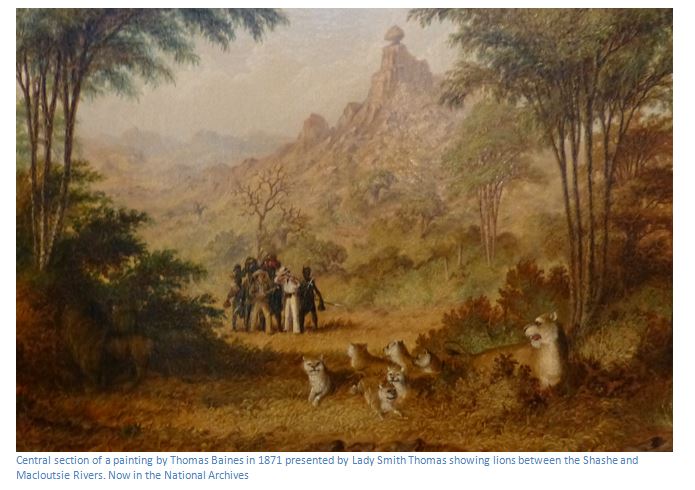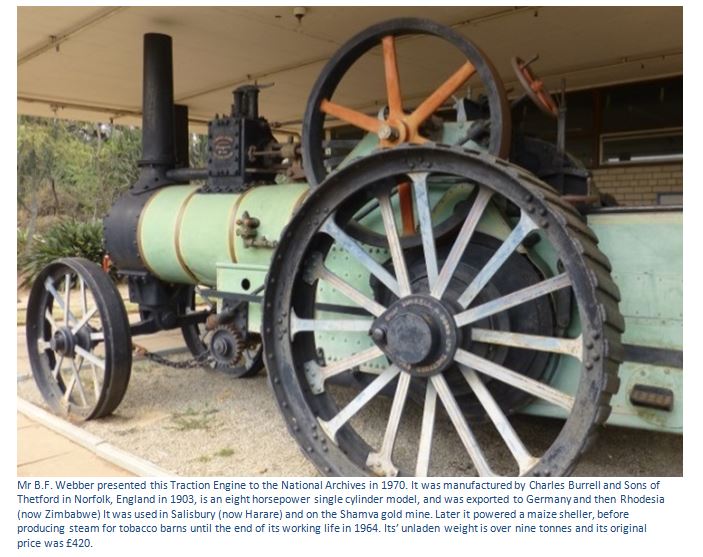The National Archives
- The National Archives safeguards the historic records of Zimbabwe.
- The Upstairs Gallery has a small but comprehensive display of some of the artefacts relating to Zimbabwe that are insightful for understanding the historical background to Zimbabwe. Newspapers and photographs provide a reminder of the Constitutional Developments that led to the birth of Zimbabwe on 18 April 1980.
- The display on the mezzanine floor concentrates on the first Chimurenga or Ndebele-Shona revolts of 1896-97 and puts into perspective the historical struggle for independence.
- Much useful material for undertaking research into Zimbabwe, including the illustrations Unit.
From the Borrowdale Road, turn into Churchill Avenue East as if going to Newlands, turn first right into Hiller Road at signpost for national Archives, turn right into Ruth Taylor Road, and turn left into National Archives at signpost.
GPS Reference: 17⁰48′06.51″S 31⁰02′16.81″E
Website: www.archives.gov.zw
The displays in the Upstairs Gallery cover a number of topics relevant to Zimbabwe’s history and culture including:
Great Zimbabwe, the first town and the reasons for its emergence in the late Iron Age +/- 1050 AD.
The Mutapa State that covered the central plateau and Zambezi valley lowlands with the capital near Mt. Darwin and featured so prominently on the maps made by all the famous cartographers in the sixteenth to eighteenth centuries. The Compleat Geographer by Herman Moll, published in London in 1725 was a digest of at least one hundred and fifty books of travel and repeats the widely held belief that the dominions of Monomotapa…”are certainly the richest in the World in gold.” Vasco Fernandes Homem visited the gold mines and the Portuguese established their base at Sofala in 1505 in an attempt to wrest the gold trade from Swahili traders and to protect their trade routes to the east.
The Mfecane in the 1830’s which culminated in Mzilikazi settling in Matabeland and crushing the remnants of the Torwa and Rozvi States, Zwangendaba and the Ngoni travelling north beyond the Zambezi and the people of Shosangane, the Shangaans, settling in southern Mozambique and Manicaland. Lobengula was King of the Matabele from 1870 to 1894 and displayed is Lobengula’s elephant seal with which he signed all important agreements.
Religion in Zimbabwe is presented from the cult of Mwari to the failed attempts of the Jesuits in the sixteenth century; the attempts of nineteenth century missionaries like David Livingstone and Robert Moffatt to introduce Christianity and the emergence today of numerous independent African controlled Christian Churches.
Early hunters including Hartley, Finaughty and Selous came for ivory; Selous’ muzzle loading elephant gun with the stock covered in the skin of an elephant’s ear is displayed along with sketches by Baines of Shona hunting with nets.
Mining took place in Zimbabwe from at least the early Iron Age in the second century for iron, copper, and gold and Swahili and Portuguese traders were attracted by the gold trade. In 1868, Karl Mauch accompanied Henry Hartley and in the area known as Old Hartley, south of Chegutu they found ancient workings and gold reefs. The resulting publicity made gold the main attraction of the interior and the led to the granting of a Royal Charter to the British South Africa Company.
The Nineteenth Century display notes the possibility of a “Second Rand” attracted the interests of Germany, Portugal, the Boers, and the British. Some of the personalities behind the colonization of Zimbabwe are featured, including Cecil Rhodes and Alfred Beit.
Resistance to Colonial rule resulted from the Europeans coming in 1890 and setting up administrative machinery that was alien to the indigenous people. This resentment led to the Ndebele / Shona rising of 1896-7 and the Mapondera Rising of 1903. The various reasons behind the outbreaks against colonial rule are explored further in a separate article, but included the hut tax, forced labour, drought, and rinderpest and land alienation.
Other displays explore the growth of the cities and transport and communications.
There is an excellent display around the historic maps of southern Africa, sketches, and paintings mostly by Thomas Baines, including those from the David Livingstone expedition of 1858-9 and his 1863 expedition to the Victoria Falls that features many views from different aspects and Zanjueela, Boatmen of the Rapids. This is supplemented by a fine collection of book displays including the Life of Father Gonzalo Silveiro; Thomas Herbert: A relation of some yeares travaile, begunne anno 1626 into Afrique and the Greater Asia (1634); Captain William Cornwallis Harris: The Wild Sports of Southern Africa (1844) William Burchell: Travels in the Interior of Southern Africa (1822) and many others.
In the entrance are displayed some fine examples of Cyrene Mission Art in the form of block prints and linocuts by the pupils of Canon Edward Paterson at Cyrene mission in the 1940’s.
The National Gallery holds a treasury of historical photographs that are irreplaceable. These are kept on a card index, which is well-kept, but both the records and the photographic images should be digitalised to ensure they are preserved for posterity. Sadly, these resources form a low priority in the current political climate, but hopefully the small funds that would be necessary to complete this task might be made available by a generous donor.
The National Archives is well worth visiting to gain understanding into the historical past and legacy that is Zimbabwe. The exhibits are well displayed and chosen and the staff is helpful and knowledgeable.




